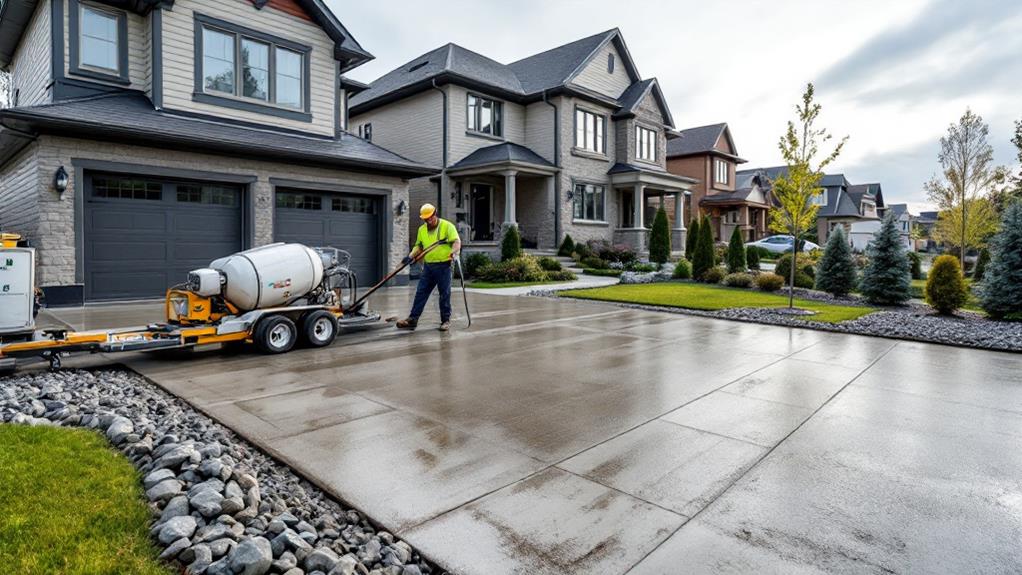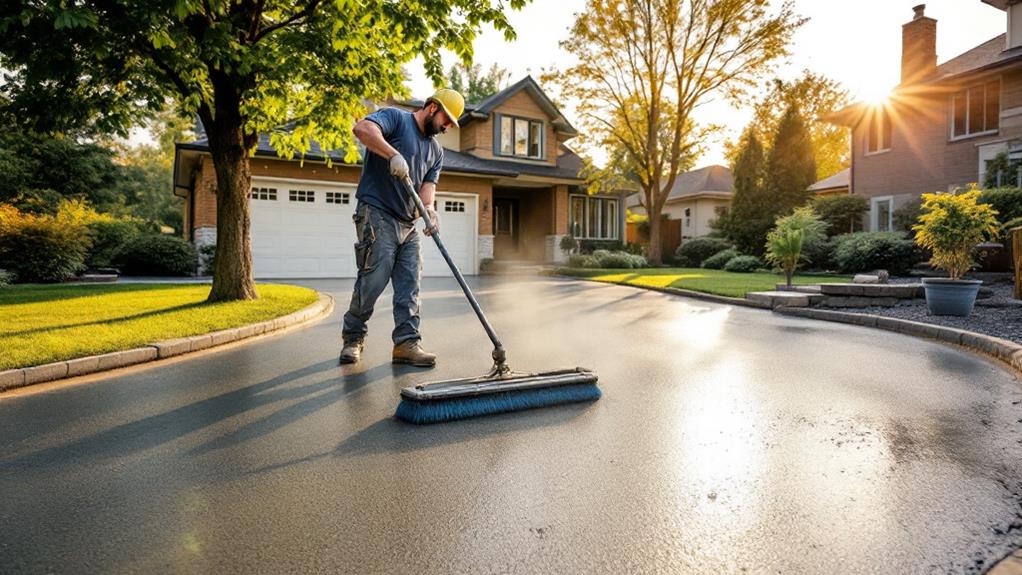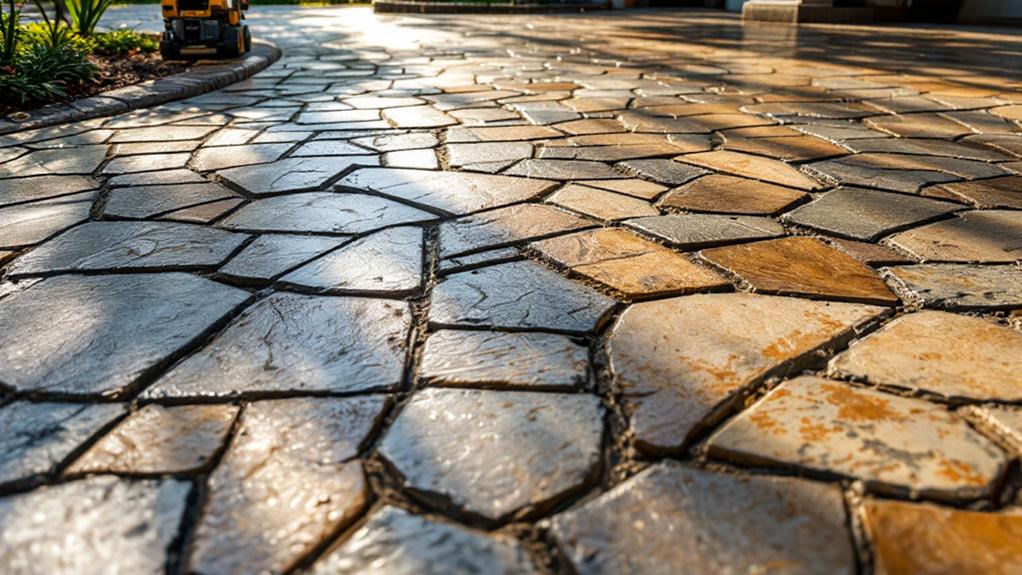Discover Vaughan Concrete, your premier concrete solutions provider in Vaughan, Ontario. We specialize in a wide range of concrete services designed to meet both residential and commercial needs. From foundational work to aesthetic enhancements, our offerings include waterproof foundations, precast concrete stairs, interlocking bricks, stamped concrete patios, and concrete patio slabs. With decades of experience and a commitment to quality, Vaughan Concrete is your go-to source for all things concrete.
Residential concrete projects are an essential part of transforming homes in Vaughan, ON, into beautiful and functional living spaces.
Call Now for Quote!
We are located
Concrete staining is a popular method used to enhance the appearance of concrete surfaces, adding color, texture, and style. This technique is ideal for both indoor and outdoor spaces, including floors, patios, driveways, and walkways. Concrete staining provides long-lasting beauty and a unique, custom look that is highly sought after in residential and commercial applications. In this post, we’ll explore the process of concrete staining, the different types of stains, and the benefits of this decorative approach.
The process of staining concrete involves applying a specialized stain to a prepared concrete surface. There are two main types of concrete stains: acid-based stains and water-based stains. Both offer distinct aesthetics and require a similar preparation process.
Surface Preparation The first step in the staining process is preparing the concrete surface. Proper cleaning is essential to ensure the stain adheres well and delivers consistent color. This typically involves pressure washing or using a degreaser to remove dirt, oil, grime, and other contaminants. For older concrete surfaces, any existing coatings or sealers must be removed to ensure the stain penetrates the concrete.
Applying the Stain After the surface is prepared and dry, the stain is applied. Acid-based stains react chemically with the minerals in the concrete, creating rich, translucent color tones. Water-based stains, on the other hand, provide a more consistent and uniform color and can be applied in multiple layers for deeper hues. The stain is usually applied with a sprayer, brush, or roller, depending on the desired effect and the size of the area. Some stains allow for additional techniques like brushing or sponging to create unique patterns or textures.
Allowing the Stain to Set Once the stain is applied, it is left to set for a specific period. For acid stains, the chemical reaction with the concrete will result in a natural, variegated color. Water-based stains tend to be more predictable, offering a wide range of colors and finishes. After the stain has set, the surface may need to be rinsed to remove any excess residue, particularly with acid-based stains.
Sealing the Concrete After the staining process is complete, the concrete surface is sealed to protect the color and enhance durability. A concrete sealer provides a glossy or matte finish, making the stained surface easier to clean and maintain. It also helps protect against staining, moisture penetration, and surface abrasion.
Acid-Based Stains Acid-based stains use mineral salts and acid to react chemically with the minerals in the concrete. The result is a rich, translucent color with natural variations and unique patterns. Acid stains create a high-end, sophisticated look and are commonly used for interior floors, patios, and driveways.
Water-Based Stains Water-based stains, on the other hand, are non-reactive and offer a more consistent, uniform color. These stains are available in a wide variety of hues and can be used for both interior and exterior surfaces. Water-based stains are ideal for those looking for a more predictable and customizable result. They also offer a faster drying time compared to acid-based stains.
Solid Color Stains Solid color stains provide a more opaque, uniform finish that covers the existing surface color. These stains are often used to give concrete a painted look and are available in a variety of colors. Solid stains are ideal for surfaces that need to hide imperfections or those looking for a bold, solid color.
Transparent Stains Transparent stains allow the natural texture and patterns of the concrete to show through. These stains are ideal for enhancing the inherent beauty of concrete while adding depth and vibrancy. Transparent stains are commonly used for decorative floors and countertops.

Aesthetic Appeal One of the primary reasons homeowners and businesses opt for concrete staining is the aesthetic appeal. Stained concrete provides a rich, elegant look that can enhance the overall design of a space. The stain can be customized to suit any style, from rustic and natural to contemporary and sleek. The variety of colors and finishes allows for endless design possibilities, making it a versatile option for various applications.
Durability Stained concrete is durable and can withstand heavy foot traffic, weather conditions, and wear over time. The staining process doesn’t compromise the strength of the concrete, and when sealed properly, it offers a long-lasting finish. The surface will resist fading, cracking, or peeling, making it ideal for both residential and commercial environments.
Low Maintenance Once sealed, stained concrete surfaces are relatively easy to maintain. Regular sweeping and occasional mopping with a mild detergent are usually sufficient to keep the surface looking clean. The sealer helps prevent dirt, spills, and stains from penetrating the surface, making it more resistant to damage from everyday use.
Eco-Friendly Concrete staining is an environmentally friendly option because it utilizes low-VOC (volatile organic compounds) products, especially water-based stains. Acid stains, while containing some chemicals, can still be a sustainable choice when applied with care. Additionally, staining existing concrete reduces the need for materials like tiles, carpets, or wood, which may contribute to waste.
Cost-Effective Staining concrete is a cost-effective alternative to other decorative flooring options, such as marble, granite, or tile. The cost of materials and labor is generally lower, and the process is quicker compared to more traditional flooring installations.

Concrete staining is a cost-effective and durable solution to enhance the appearance of concrete surfaces. It offers a wide range of design possibilities, from subtle, translucent tones to vibrant, solid colors. With its ease of maintenance, durability, and aesthetic appeal, concrete staining is an excellent choice for both residential and commercial properties. Whether you are updating your patio, driveway, or interior floors, concrete staining can provide a beautiful and lasting finish.
